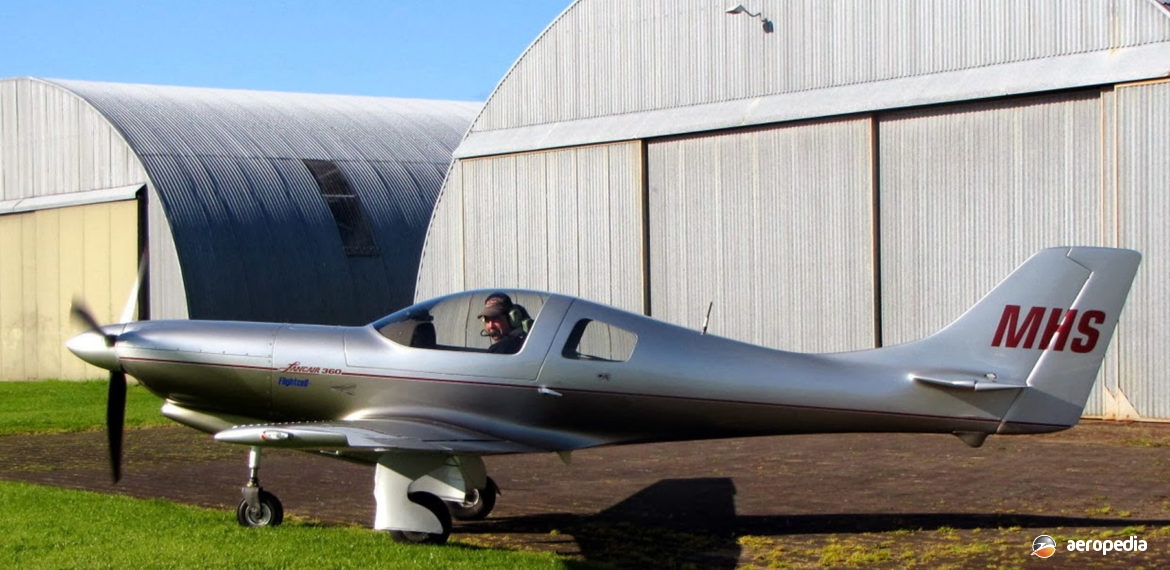Photograph:
Neico Lancair 360 VH-CLW2 (c/n AA51) at the Australian International Air Show at Avalon, VIC in March 2005 (David C Eyre)
Country of origin:
United States of America
Description:
Two-seat light sport monoplane
Power Plant:
One 134 kw (180 hp) Textron Lycoming O-360 four-cylinder horizontally-opposed air-cooled engine
Specifications:
- Wingspan: 8.3 m (27 ft 2 in)
- Length: 6.4 m (21 ft)
- Height: 1.98 m (6 ft 6 in)
- Wing area: 6.99 m² (75.23 sq ft)
- Max speed: 418 km/h (260 mph)
- Cruising speed: 378 km/h (235 mph)
- Stalling speed: 101 km/h (63 mph)
- Rate of climb: 533 m/min (1,750 ft/min)
- Service ceiling: 5,486 m (18,000 ft)
- Take-off distance: 119 m (390 ft)
- Landing distance: 274 m (900 ft)
- Range 347 m (1,140 miles): 163 litres (36 Imp gals)
- Empty weight: 494 kg (1,089 lb)
- Loaded weight: 764 kg (1,684 lb)
History:
The Lancair 360 is a development of the earlier 200, 235 and 320 series and has optional wingtip extensions that increase wingspan from 7.16 m (23 ft 5 in) to 8.3 m (27 ft 2 in). The empty weight of the aircraft increased with the weight of the larger engine to 543 kg (1,197 lb) and the aircraft is usually powered by a Lycoming IO-360-B1F engine driving a MTV-12 three-blade propeller. A total of 12 Model 360s appeared on the Australian Register in mid-2016.
The Model 360, like the other aircraft in the series, is a two-seat aircraft which is marketed in kit form and is a low-wing monoplane of conventional configuration with a retractable tricycle undercarriage. A variant was the 360TC, a model with a turbocharged Lycoming engine. The Lancair 360 could be fitted with either the Lycoming IO-320 or IO-360 engines, driving two or three blade propellers, depending on the requirements of the builder.
The Lancair Legacy later replaced the Model 360 on the market, this model being made available in 1999. It was designed by Lance Neibuaer. The first model was the 200 which was built of urethane and hot-wire cut Styrofoam covered with wet layed-up fibreglass, but once the series got into production the parts were made of temperature-cured, prepeg fibreglass and graphite parts that were lighter and stronger than the method previously used. Mr Neibauer sold his family home to pursue his dream of producing ‘the perfect kit’. When the Neico ‘fast-build kit’ was released in 1990 its popularity resulted in a waiting list of one year. After two years into development, the kit provided to builders provided all major sub-assemblies including the fuselage ex-factory.

